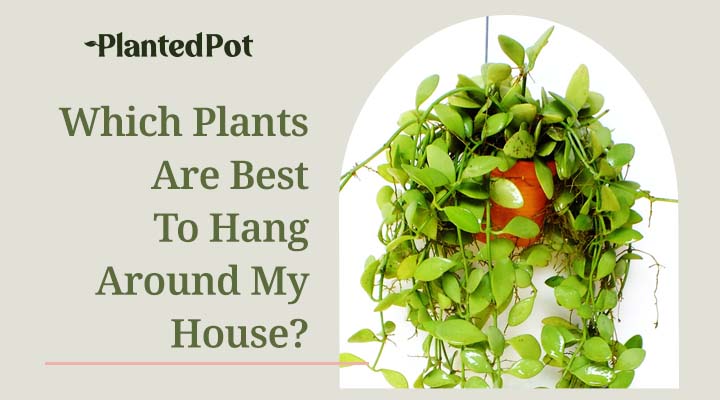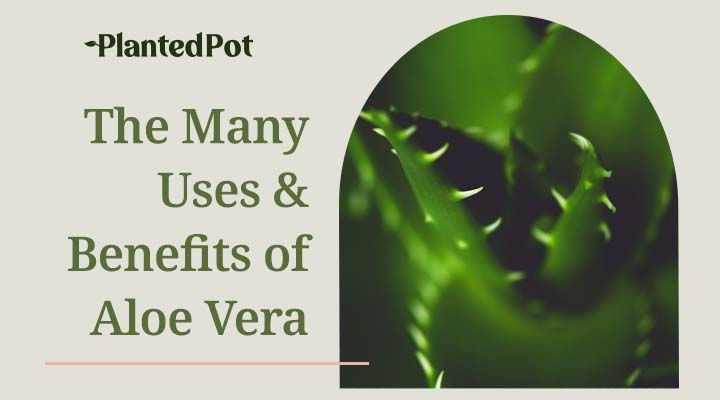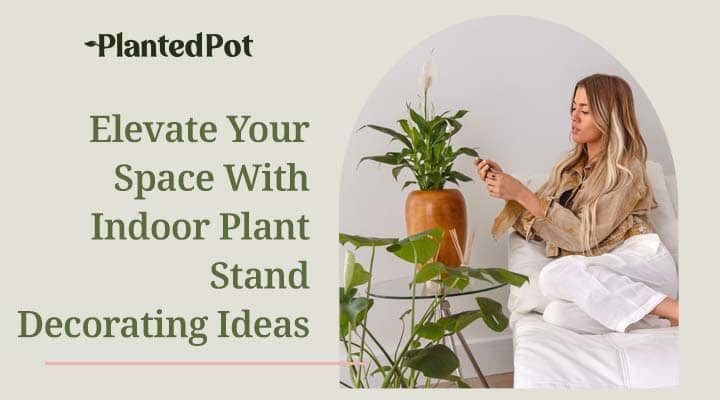
Himalaya Care: Simple Tips & Tricks for a Unique Succulent
Home / Himalaya Care: Simple Tips & Tricks for a Unique Succulent

Himalaya Care: Simple Tips & Tricks for a Unique Succulent
- Kyle Chin
- April 30, 2021
- 6:39 pm
- No Comments
The Senecio Himalaya plant is a unique flowering succulent that you can grow almost anywhere under any conditions. It’s an extremely durable plant that’s easy to grow, making Himalaya care simple for new and experienced plant owners alike! This winter-blooming succulent provides pleasantly fragrant flowers to keep your home smelling sweet and fresh.
The Senecio Himalaya is a cute little plant that goes well with any decor. Find out why we love this amazing plant and the great care tips you need for taking care of this succulent!
What is a Himalaya Plant?
The Senecio Himalaya (Senecio barbertonicus) is a succulent shrub plant native to southern Africa. You can usually find the plant growing in sub-tropical woodland environments and rocky grassland areas. The Senecio Himalaya falls under the Asteraceae plant family, often referred to as the daisy or sunflower family.
Some other common names for this species are:
- Barberton Senecio
- Barberton groundsel
- Lemon bean bush
- Himalaya groundsel
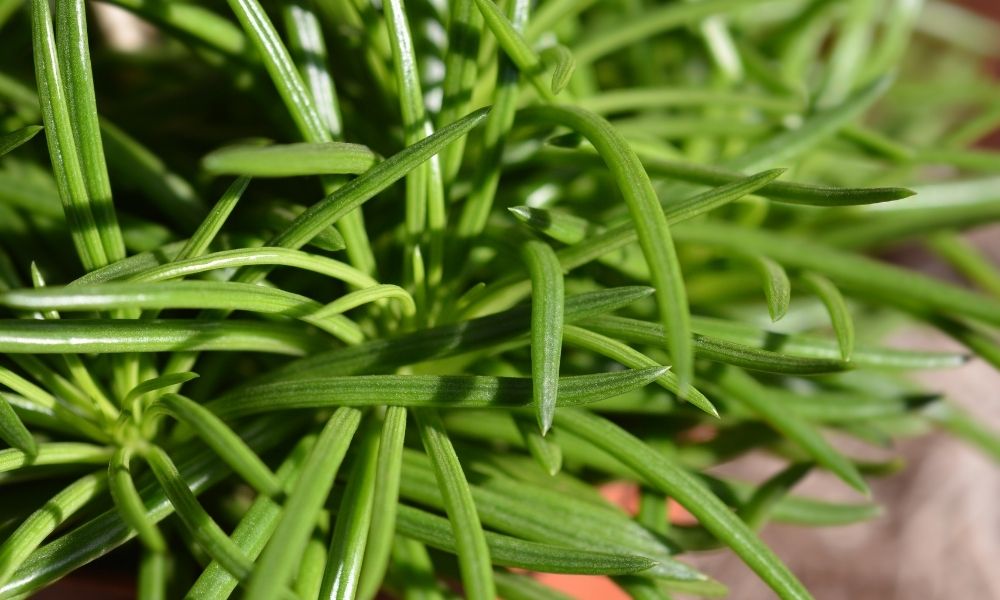
Senecio Himalayas are characterized by the long, green bean-like leaves that curve upwards, almost like a chandelier. Each leaf is about 2-4 inches long, and the plant can grow up to 6 ft. tall in the wild! However, it can be easily trimmed and managed when grown indoors or in your backyard.
Although the Senecio Himalaya typically grows in higher altitudes between 100-5000 ft. high, many people have started growing and cultivating the plant in all regions due to its increasing popularity. This unique succulent is highly sought after for its strong drought resistance and ability to bloom in the winter.
While most plants stop growing and go dormant during the cold winter seasons, the Senecio Himalaya blooms beautiful, golden-yellow flowers that produce a sweet-smelling fragrance. The flowers typically grow in clusters at the top of each stem, creating a splash of sunshine wherever they are.
Are Himalaya Plants Easy to Care For?
Like most succulents, Senecio Himalaya plants are extremely easy to care for. They require very little water and thrive in warm conditions. Even if you occasionally forget to water your Himalaya, they’ll still be able to grow and survive.
Like most succulents, the Senecio Himalaya s the unique ability to store water in its stems and leaves. The plump, glossy look you see in most succulents results from storing up water for the future. This ability is how many succulents can survive in dry regions.
Can You Grow Himalaya Plants Indoors and Outdoors?
Yes, you can grow your Himalaya plant both indoors and outdoors! The plant’s resiliency and hardiness make it easy to grow anywhere.
Himalayas are great for rock gardens because they don’t require much water to grow. Because Himalayas can also absorb the whole light of the sun, they can also be placed anywhere without worrying about leaf burn.
What Are the Benefits of Himalaya Plants?
Owning a couple of plants can actually have significant psychological and physiological benefits to you! House plants are amazing things to have around to improve the air quality and even lower your stress.
- Better air quality – Pretty much all indoor houseplants can absorb the harmful, toxic gasses in the air like formaldehyde, carbon monoxide, and toluene. Plants also act as a natural air purifier by recycling the carbon dioxide in the air into fresh oxygen for us to breathe. There are similar levels of pollutants in the air inside as there are outside, and having plants around helps cleanse the air to help us focus better.
- Lowers stress & anxiety – Studies have shown that having plants in your office or home can significantly reduce stress. This 2015 study explored the effects of plants on people. Many test subjects reported feeling lower stress levels after interacting with the plant for just a few moments a day. The researchers also found lower blood pressure and heart rate in the test subjects.
Since Himalayas are relatively easy to care for, almost any first-time plant owner can have an easy time with this plant. Of course, we highly recommend owning a few to help boost your health!
Himalaya Care Tips
Though the Senecio Himalaya is not hard to care for, knowing the optimal growing conditions like the ideal temperature to grow in or the suitable soil can help your plant grow better. Once you’ve gotten the hang of caring for your Himalaya, you can pretty much just leave it to grow on its own.
Finding the Right Pot
The best pots to use are usually terra cotta or clay pots because they are porous material that allows water to drain and evaporate. If the soil or pot traps too much water and is unable to drain properly, root rot can set in and severely damage your plant.
Senecio Himalayas grow relatively slowly and usually only need to be repotted once every couple of years. Increase the pot size by a few inches each time to allow the roots to have extra room to grow into.
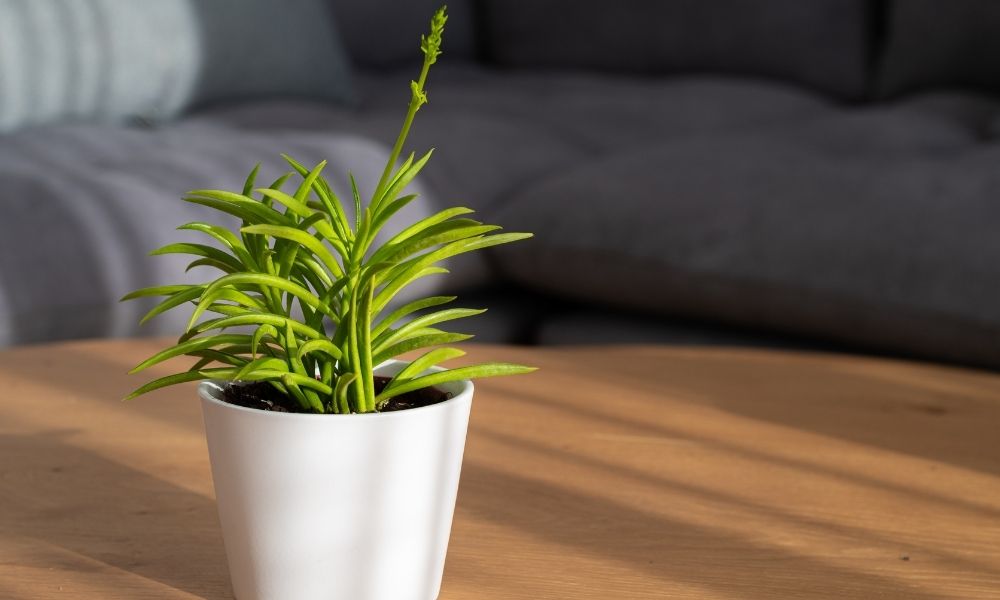
Choosing the Right Soil
Himalayas can tolerate a wide range of pH in their soil. However, regular cactus or succulent potting mixes will work perfectly to help the plant grow. You can also mix in minerals in the soil to help with growth.
Some great options to add in are:
- Perlite
- Coarse sand
- Volcanic rock
- Tree bark
- Small or crushed gravel
The gritty material of the soil helps it become more well-draining. Well-draining soil is crucial so that no water or moisture is trapped inside.
Watering Your Himalaya Plant
Succulents can store moisture in their leaves, allowing them to survive for weeks on end without any water. Allow the soil to dry out completely before watering your Himalaya. While the plant can survive for long periods without water, overwatering can damage the plant and even cause plant death.
When you water your Himalaya, thoroughly soak the soil and allow the water to drain. Typically the time between waterings can be anywhere from 2-4 weeks, depending on the temperature and humidity in the area you live in. If you are growing your Himalaya plant outdoors, make sure that it is protected or covered in case of rain to avoid excess water.
Feeding Your Himalaya Plant
Not much fertilizer is needed for succulents to grow. Himalayas are slow-growing, and feeding it fertilizer won’t help them grow faster. However, you can use fertilizer from time to time to encourage healthier growth to reach its full potential.
For best results, use a half-strength or less liquid fertilizer about once or twice a year during growing seasons. You can feed once at the start of spring and once during summer. You won’t need to feed the plant during the winter since Himalayas bloom during winter.
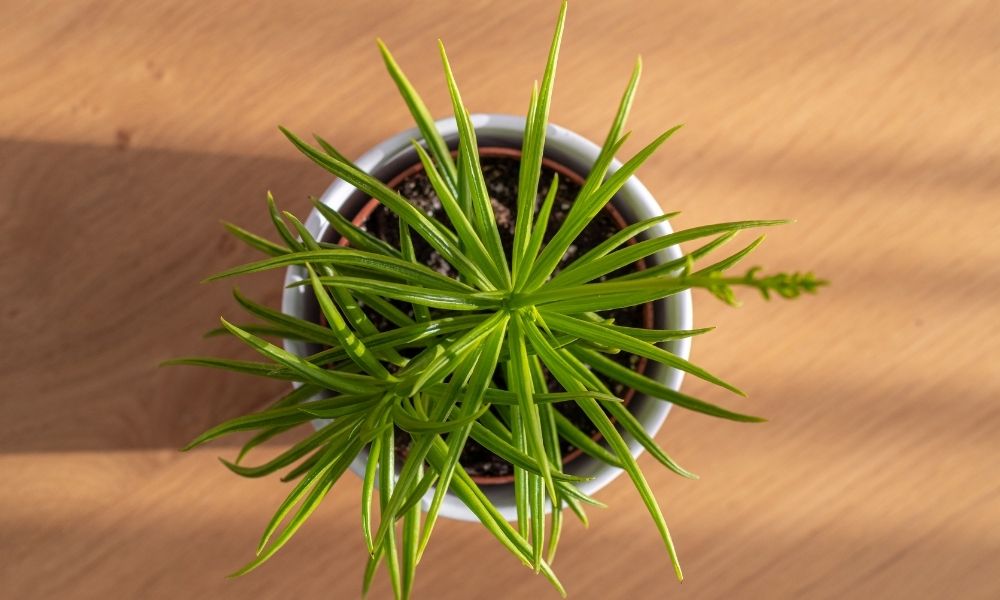
Himalaya Plant Placement and Lighting
An ideal location for your Senecio Himalaya is somewhere that has 4-6 hours of consistent sunlight every day. However, Himalayas are also very tolerant of shade and indirect light.
If you are growing your Himalaya outside, make sure the sun can reach the plant at all times to ensure more robust growth. Unlike many other plants, direct sunlight won’t cause any burn or damage to the leaves.
Humidity and Temperature
In addition to being very drought resistant, Himalayas are also able to endure cold temperatures. While it typically thrives in warmer conditions, Himalayas can survive in temperatures as low as 25°F (-4°C)! However, extended exposure to the cold can eventually stunt plant growth.
Himalayas prefer a warmer, more humid environment. If you live in a dryer area and want to boost the moisture content, you can use a humidifier or place a bed of wet rocks under your plant. The moisture from the rocks will slowly evaporate, creating more humid conditions for your plant.
Be careful to make sure there is no frost! Even though Himalayas can endure colder temperatures, frost can damage the plant directly and cause the plant to wilt or die.
Pruning a Himalaya Plant
If your Himalaya starts to grow too big inside the house, you can prune the tops of the stems to keep it more manageable. Some of the taller varieties of Senecio Himalayas can also get top-heavy and tip over if not properly trimmed. Many plant experts recommend pruning at the start of the growing season around spring to allow new leaves to grow in fully.
When you’re pruning your plant, make sure to use sharp, clean shears. Using clean plant shears is important to prevent infection or damage to the plant. An infected plant can eventually lead to plant death if not trimmed and managed correctly.
Common Issues Found in Himalaya Plants
Here are some of the most common issues when it comes to taking care of Himalayas:
- Underwatering – If you notice the leaves start to turn crispy, wrinkled, and dry, it may be a sign that you aren’t watering the plant enough. Completely soak the soil with water and allow it to drain. Check back in a week or two to see the soil’s moisture level.
- Overwatering – Yellow and plump leaves are often a sign that you may be overwatering your plant. Sometimes the leaves will turn transparent, which means you need to cut back on how often you are watering your Himalaya.
- Frost damage – Excessive exposure to frost can damage the plant and lead to gray, mushy leaves. You may need to trim off the damaged parts of the plant to allow it to regrow healthy leaves.
- Insufficient light – If the leaves become stretched or droopy, they probably need more light. Plants tend to grow towards the warmth and sunlight if they are lacking.
- Brown/black/red leaves – Leaf discoloration is the most common sign of plant rot. Occasionally there will even be an odor that is produced. Trim off the damaged areas as soon as possible, or the rot could eventually spread to the rest of the plant.
- Pests – Insects like spider mites or mealybugs can attach themselves to the leaves of plants. Remember to check every so often for any pests and use plant-safe insecticide to remove them if detected.
How Do I Know if My Himalaya Plant is Dying?
If your Himalaya is not growing as expected or you see noticeable signs of neglect, it could be a sign your plant is dying. Discoloration or wilting are telltale signs that you probably need to adjust a few of the growing conditions.
Keep track of how often you’re watering your Himalaya and if its placement has enough sunlight. If discoloration is significant, trim off the damaged leaves and stems to save the plant. In some cases, repotting may help the plant.
Are Himalaya Plants Poisonous?
While you should not be consuming tropical plants in general, Himalaya plants aren’t considered dangerous to humans. However, they are highly toxic and poisonous to animals, including dogs, cats, and horses.
When eaten, it can cause liver damage, vomiting, and diarrhea in your pets. If your dog or cat tends to chew on things around the house, you may want to keep this plant away from them or avoid it altogether. If your pet accidentally ingested part of your Himalaya, seek medical attention immediately!
Related: Pet Friendly Plants: Which Plants Are Safe for My Furry Friend?
Final Thoughts – Himalaya Care
The Senecio Himalaya is an amazing succulent that can survive in almost any climate or environment. It’s great for beginners and goes great in any backyard or kitchen. If you’re looking for a hardy, durable plant that doesn’t take up too much of your time to care for, check out the Senecio Himalaya succulent!
Related: Succulent Care: 7 Simple Tips & Tricks for Beginners


